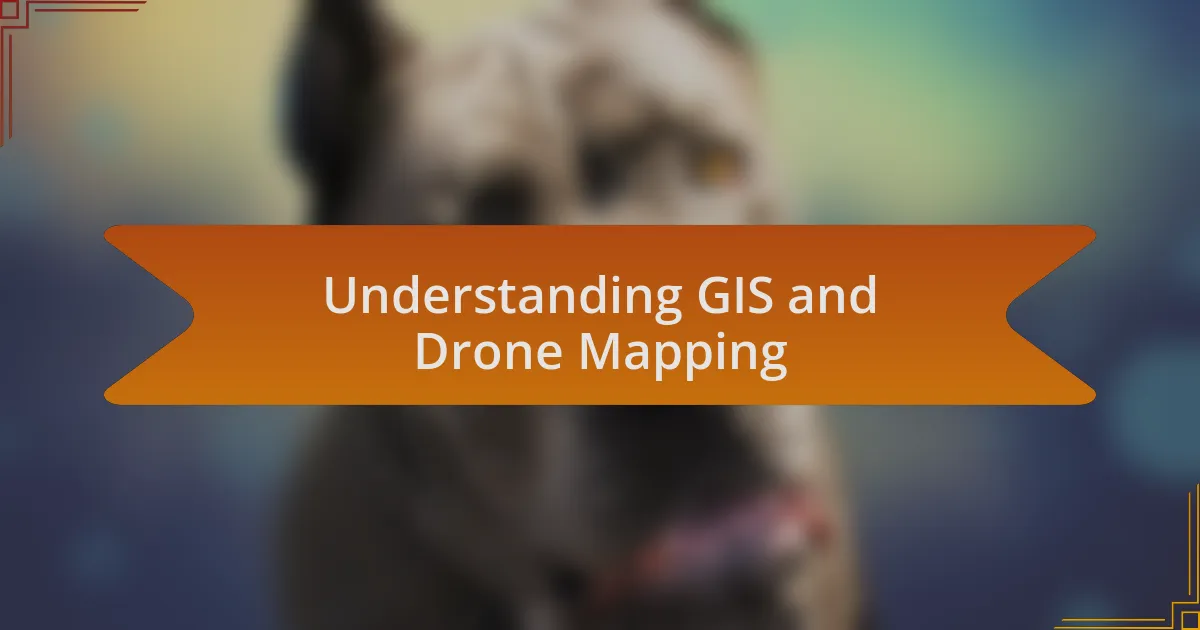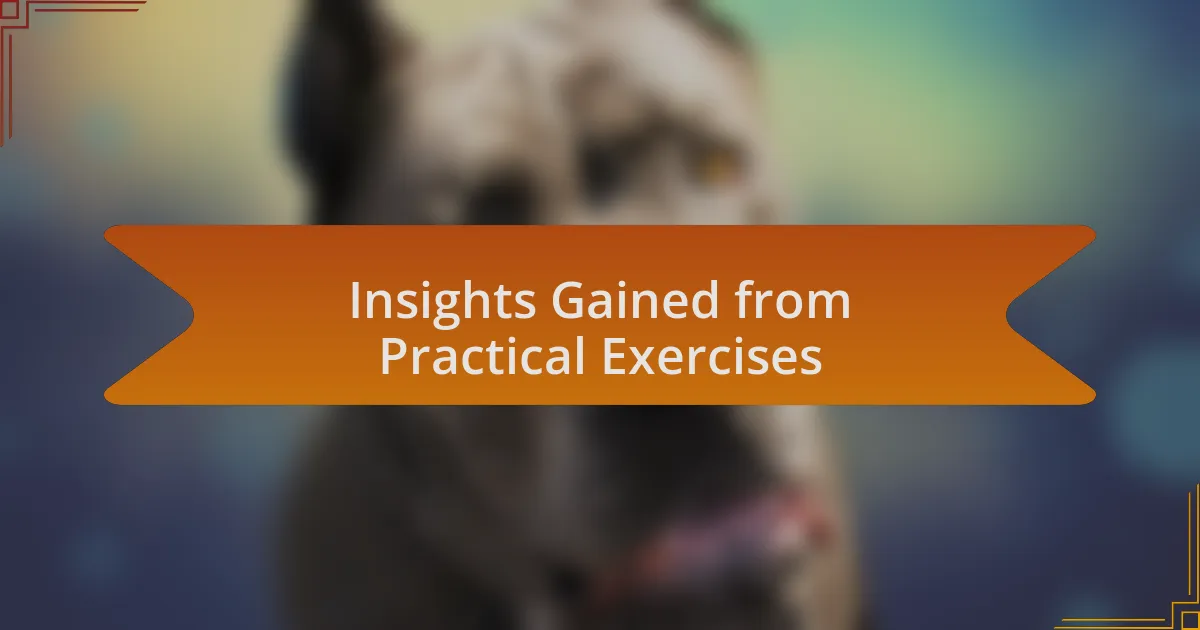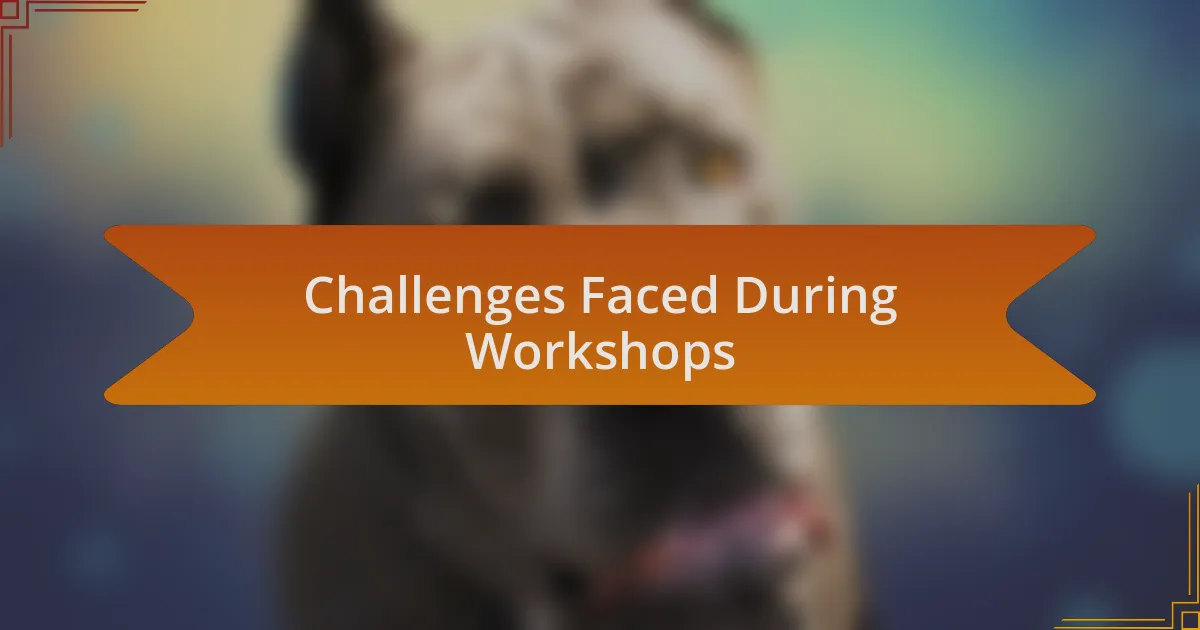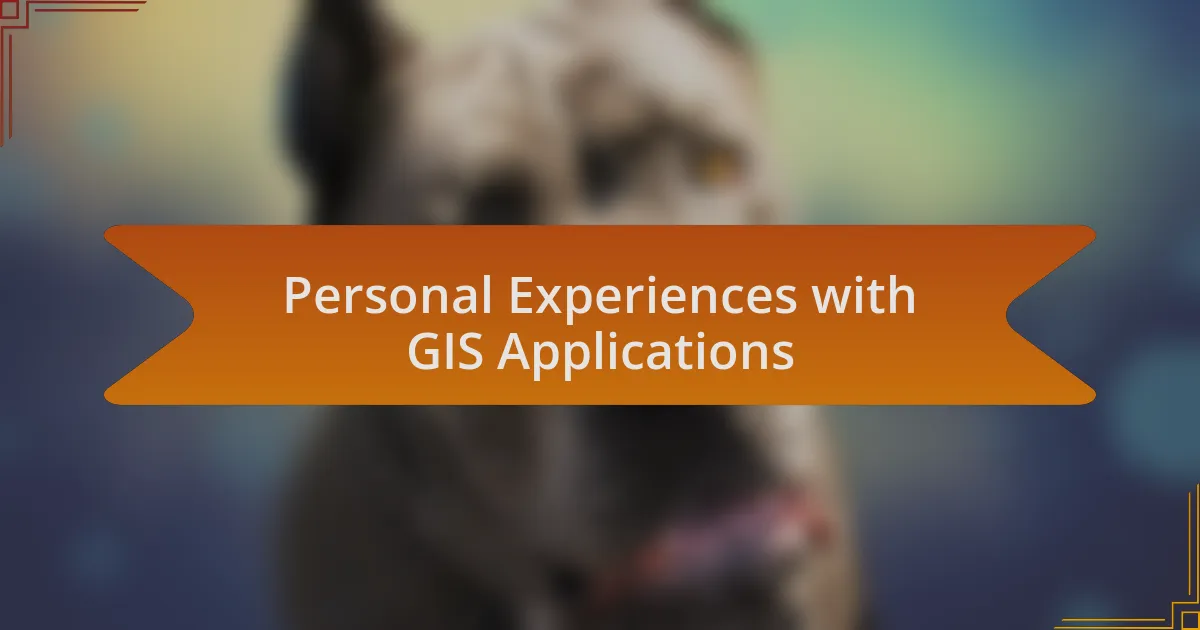Key takeaways:
- The integration of GIS with drone mapping enhances spatial analysis and storytelling, allowing for detailed landscape understanding and data visualization.
- Practical exercises reveal the importance of collaboration and diverse perspectives in problem-solving, enriching the learning experience.
- Challenges faced during the workshops, such as communication breakdowns and technical issues, highlight the need for adaptability and resilience in learning environments.
- Hands-on experiences with GIS applications demonstrate its real-world impact, particularly in areas like agriculture, emphasizing the potential for technology to benefit communities.

Understanding GIS and Drone Mapping
Geographic Information Systems (GIS) and drone mapping are two powerful tools that can transform how we perceive and analyze our world. I remember my first experience using a drone to capture aerial imagery; the excitement I felt as I watched the data unfold on my screen was palpable. It made me realize that GIS is not just about software; it’s about storytelling—transforming raw data into meaningful insights that can drive decisions.
When I think about the relationship between GIS and drone mapping, I can’t help but wonder: how often do we overlook the potential of merging these technologies? The synergy they create is incredible. For instance, using drone-captured imagery in GIS allows for precise mapping of landscapes, which is particularly vital in projects like land use planning in Zanzibar. The intricate details that drones offer can enhance our understanding of changes over time, revealing patterns that ground-level observations could easily miss.
Moreover, working with GIS tools after capturing data with drones deepened my appreciation for spatial analysis. I’ve found that the combination lets us visualize results dynamically. It was enlightening to see how layering different data sets—like topography, vegetation, and water resources—could lead to richer analysis. Has there been a moment when you’ve connected seemingly disparate pieces of information to form a coherent picture? That’s precisely the magic of integrating GIS with drone mapping.

Insights Gained from Practical Exercises
Engaging in practical exercises during the GIS workshops was eye-opening for me. I still recall the day we navigated a drone over the stunning coastline of Zanzibar to conduct a topographic survey. Watching the landscape unfold from above, I gained a visceral appreciation for how elevation changes can significantly impact coastal development and environmental conservation. It was as if I was seeing the land breathe and shift in real-time.
One of the most impactful lessons came when we were tasked with interpreting the data we collected. I grappled with creating a meaningful map from raw data while feeling the thrill of discovery as patterns emerged. Have you ever felt that rush when connecting the dots between data points? That experience reinforced for me the importance of analytical skills. It’s not merely about collecting information; it’s about transforming that information into a narrative that can inform future decisions.
Another revelation came from the collaborative nature of the practical exercises. Working alongside others, I learned the value of diverse perspectives in problem-solving. Sharing insights and techniques gave me new ideas on how to approach challenges differently. This collective learning experience underscored a universal truth: the journey to mastery is always richer when we bring others along for the ride.

Challenges Faced During Workshops
Throughout the workshops, communication breakdowns posed a significant challenge. I vividly remember a session where we struggled to align our objectives with the instructor’s expectations. How can you achieve effective learning when everyone is on a different page? This disparity sometimes led to frustration, making it clear that clear communication is vital for a productive workshop.
Another hurdle we faced was the technical limitations of the equipment. There were moments when our drones malfunctioned or the software crashed, leading to delays and lost data. I recall a particular day when we spent hours troubleshooting, and the helplessness I felt was palpable. It taught me that adaptability is crucial; you must be prepared for the unexpected in anything related to technology.
Finally, balancing the theoretical knowledge with hands-on application proved challenging. I often felt overwhelmed by the sheer amount of information we were expected to absorb and apply in real-time. Have you ever felt the pressure of needing to perform while still grappling with new concepts? It was a delicate dance, highlighting the need for patience and resilience as we navigated this multifaceted learning experience.

Personal Experiences with GIS Applications
I remember my first encounter with GIS applications during a hands-on workshop. We were tasked with mapping a section of the coastline, and I felt an exhilarating mix of excitement and anxiety. As I navigated the software, I realized how crucial spatial thinking is in understanding geographic data. Have you ever felt that spark when a tool suddenly makes sense? It was a game-changer for me.
During another session, we explored the integration of drones with GIS software. I was astonished by how a simple aerial image could transform into a detailed map within minutes. The moment our group presented our findings, I was proud yet nervous. The experience taught me that GIS isn’t just about technology; it’s about storytelling through data, and I found myself captivated by the narratives we could create.
Reflecting on these experiences, I’ve gained a deeper appreciation for GIS applications in real life. One instance stands out vividly: while mapping agricultural fields, I realized how farmers could use these insights to enhance their crop yields. It made me question, how can we leverage these technologies to help communities thrive? This realization fueled my passion for GIS, reinforcing the impact it can have on people’s lives.